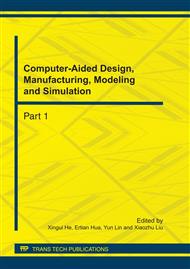p.465
p.470
p.475
p.481
p.486
p.491
p.497
p.503
p.509
A Method to Compute Siphons Based on Matrix Manipulation
Abstract:
As a structural object of Petri nets, siphons are significant in the analysis and control of deadlocks in a Petri net. However, some existing siphon computation methods are quite time-consuming. In this paper, based on incidence matrix manipulation, a new method is proposed to compute a set of siphons in a class of Petri nets called systems of simple sequential processes with resources (S3PR). The proposed method consists of two algorithms: 1) computation of an unmarked maximal siphon and 2) obtain minimal siphons from an unmarked maximal siphon. A flexible manufacturing systems (FMS) example is used to illustrate the proposed method.
Info:
Periodical:
Pages:
486-490
Citation:
Online since:
August 2011
Authors:
Price:
Сopyright:
© 2011 Trans Tech Publications Ltd. All Rights Reserved
Share:
Citation:


